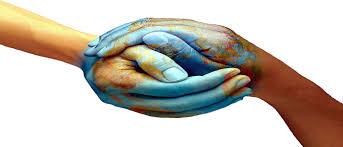Skip to main content
Messages in The Vedas
Messages in the Vedas
I. Overview
-
Foundation of Sanatana Dharma: The Vedas are the foundational source for Sanatana Dharma and its practices.
-
Rituals: Major component includes rituals to propitiate deities (Devatas) as described in Brahmanas.
-
Diversity: Contain diverse topics, including prayers for peace and prosperity, insights on the origin of universe, the nature of existence, societal values, marriage, health and well-being, and the purpose of life.
II. Key Themes and Messages
A. Peaceful Coexistence

-
Universal Prayers: Invariably include all living organisms, not just humans.
-
Harmony: The message is that all beings must peacefully coexist.
-
Example: Prayers to bless "ashtapathi" (eight-legged) and "navapati" (two-legged, four-legged, etc.) beings.
B. Societal Values
-
Oneness of Truth: Although articulated differently, truth is one. There should not be any fight or hatred among religions.
-
Openness to Noble Thoughts: Encourages gathering noble thoughts from all over the world.
C. Origin of the Universe

-
Nasadiya Sukta: Explores the origin of the universe (Rigveda, 10th Mandala).
-
Hiranyagarbha sukta: Deals with origin of the universe
-
Purusha sukta: Deals with origin of the universe and living beings
- Found frequently in the Vedic corpus.
D. Atharvaveda (Focus on the Here and Now)
-
Themes:
-
Bhaisajyani: Mantras related to medicine and diseases.
-
Ayushyani: Mantras for long life.
-
Paustikani: Mantras for agriculture, house construction, and commercial transactions.
-
Prayashcitta: Mantras to deal with bad and inauspicious matters.
-
Strikarmani: Mantras related to the lives of women (marriage, love, child welfare).
-
Rajakarmani: Mantras with political notions.
-
Brahmanyani: Mantras for philosophical speculation.
-
Relevance: Addresses issues people face in life and activities they undertake.
III. Upanishads (Focus on Self-Knowledge)

A. Prashnopanishad
- Organized around six questions posed by students to a guru about knowledge of life.
B. Kathopanishad
- Story of Nachiketa, who journeys to explore the truth about death and immortality.
C. Brihadaranyaka Upanishad
- Extensive Upanishad with many interesting conversations.
- Features a prominent discussion between King Janaka and Yajnavalkya.
D. Mundaka Upanishad
- Mentions "Satyam Eva Jayate" (Truth Alone Triumphs), India's national emblem.
- Describes Para Vidya (ultimate knowledge) and Apara Vidya (relative knowledge).
E. Taittiriya Upanishad
- Contains a convocation address from a guru to students passing out of a Gurukula.
- Advices related to living with reference to self and society.
- "Sathyam Dharma Chara Dharmam"
- "Sathyam Vada Dharmam Chara"
- "Acharya Devo Bhava", "Atithi Devo Bhava" etc
- Addresses:
- One's relationship with elders and teachers
- Attitude toward the learned and wise.
- Guidance on giving.
- Remedies for doubts, duty, and conduct.
- Handling being falsely accused.
IV. Conclusion
- The Vedas contain a vast and diverse body of knowledge.
- Examples shown give us a sense of the teachings in the Vedas.



